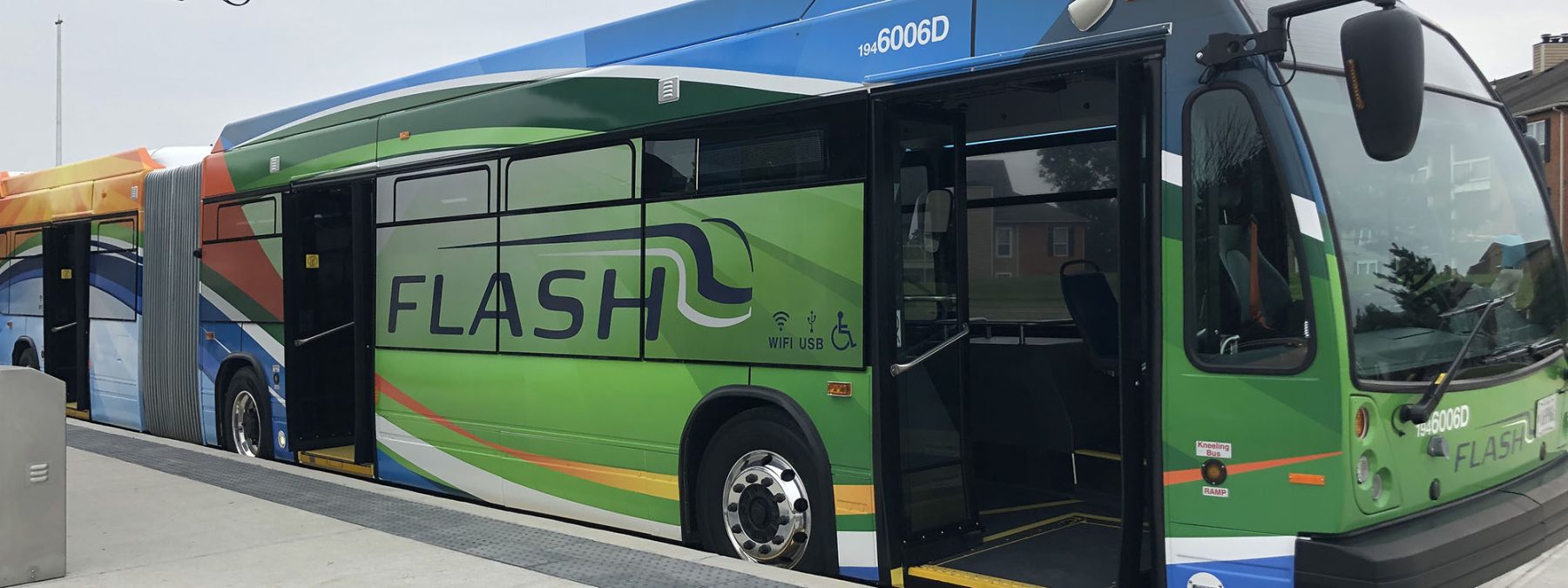
Plan Recommendations
The Plan recommendations are organized into four groups: Near-Term Transit Network, Long-Term Transit Vision, Supporting Recommendations, and Regional Opportunities.
Near-Term Transit Network
This Plan recommends the MD 355 BRT and Veirs Mill Road BRT as the most crucial first steps in improving transit accessibility along the I-270 corridor. Following implementation of these services, the Plan recommends new dedicated bus lanes, referred to as the Corridor Connectors, to connect key activity and employment centers to the county’s primary north-south rapid transit lines, as well as Metrorail and the MARC Rail Brunswick Line.
The Near-Term Transit Network includes the following recommendations:
- Implement the MD 355 BRT and Veirs Mill Road BRT.
- Implement the Corridor Connectors, a network of dedicated bus lanes in the midcounty and upcounty, which include refinements to the Corridor Cities Transitway.
- Support the Great Seneca Transit Network.
- Support the North Bethesda Transitway alignment as master-planned.
- Continue state-provided commuter bus service on I-270, making use of the Corridor Connectors when diverting to bus stations in Montgomery County’s population and employment centers via the Corridor Connectors.
Long-Term Transit Vision
In addition to the Near-Term Transit Network, the Plan also includes recommendations for a long-term extension of the Washington Metropolitan Area Transit Authority’s (WMATA) Metrorail Red Line to Germantown Town Center and enhancements to the Maryland Area Regional Commuter (MARC) Brunswick Line. These long-term transit investments are ambitious due to the additional detailed analyses required, the magnitude of coordination, and existing WMATA and MARC priority projects. For example, the work that must be done within the core of the existing Metrorail system must be addressed prior to advancing an extension of the Red Line.
These recommendations include:
- Work with local, state, and regional partners to advance the recommendation for a Red Line Extension to Germantown Town Center.
- Support the long-term potential of the Maryland Transit Administration MARC Rail Brunswick Line.
- Promote strategic and equitable MARC Rail access by supporting new stations.
Supporting Recommendations
Beyond the transit network itself, Corridor Forward offers additional recommendations that support the transit network and strengthen the potential to advance local and regional transit connectivity:
- Convert existing general-purpose travel lanes to dedicated transit lanes on targeted streets to maximize person throughput and improve the relative travel time competitiveness and convenience of transit, including—but not limited to—the streets detailed in the right-of-way table.
- Prioritize the provision of dedicated transit lanes and spaces for walking, bicycling and other micromobility modes over auto capacity to maximize person throughput and improve the relative travel time competitiveness and convenience of transit.
- Develop a multimodal transit hub within the vicinity of Metropolitan Grove as part of implementation of the Red Line Extension to serve local bus, BRT, Metrorail and MARC services.
- Ensure safe and efficient access to planned transit stops for pedestrians, bicyclists, and other micromobility modes.
- Update relevant land use plans and guidelines to support master-planned transit facilities.
- Where beneficial and/or necessary, support the incremental implementation of dedicated bus lanes.
- Maximize the travel potential of dedicated bus lanes.
Regional Opportunities
The Plan includes recommendations that focus on connections to adjacent jurisdictions, such as Frederick County and Fairfax County, Virginia:
- Study extensions of the Purple Line to understand if and where extension(s) of the county’s light rail service may be warranted.
- Design and construct the American Legion Bridge to support rail transit.
- Explore a direct transitway connection between the recommended WMATA Metrorail Red Line terminus and Frederick City.
Focus on equity
The Plan had a strong focus on equity in development of the recommendations. The near-term transit network and long-term transit vision together add the greatest number of transit trips to and from the county’s Equity Focus Areas (EFA) of all transit options studied, increasing access to jobs, services, and amenities for residents in EFAs. The near-term transit network also establishes premium transit infrastructure in equity focus areas not currently served by BRT or rail.
Staff Contact
Jessica McVary
301-495-4723
Email